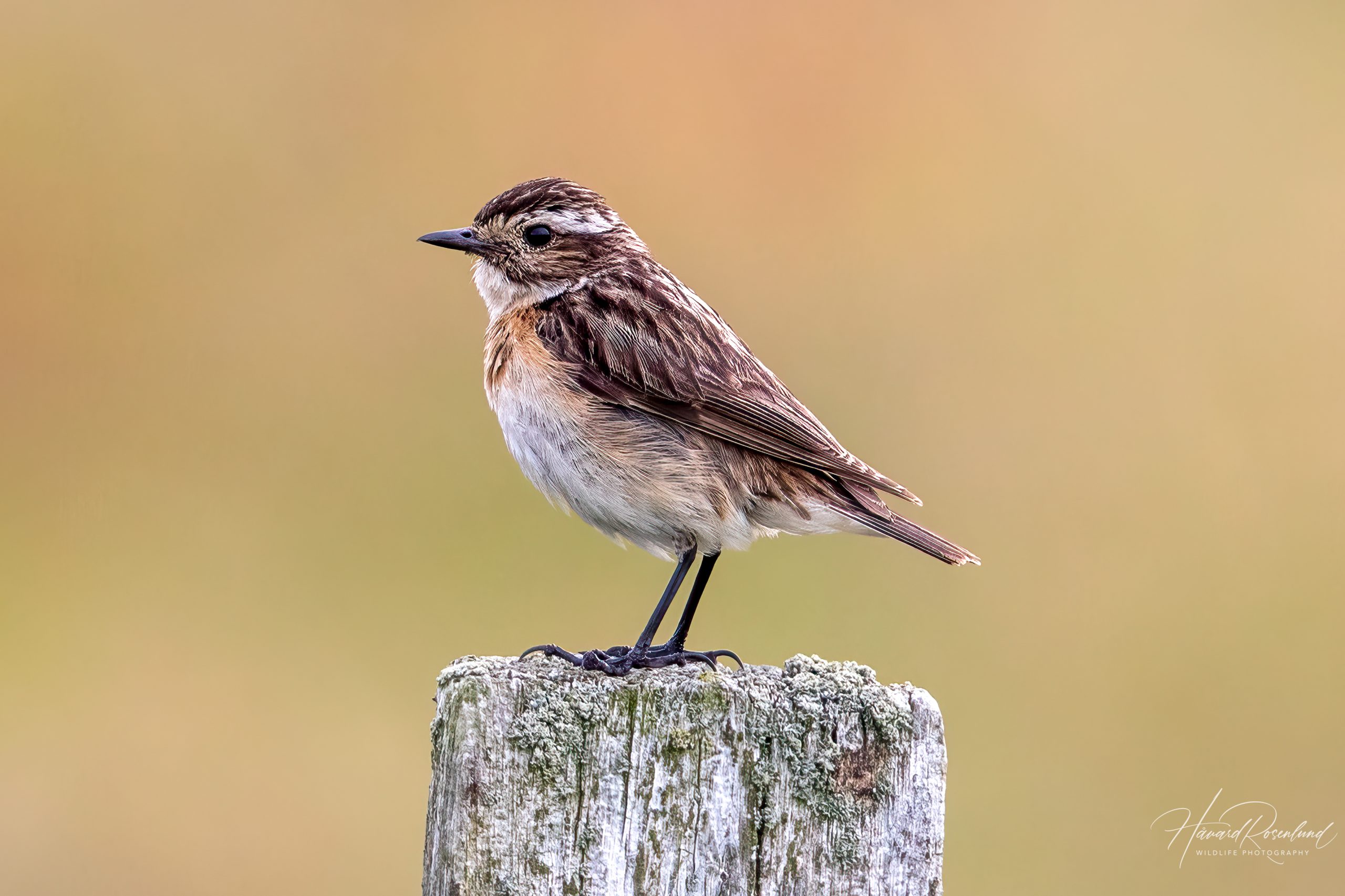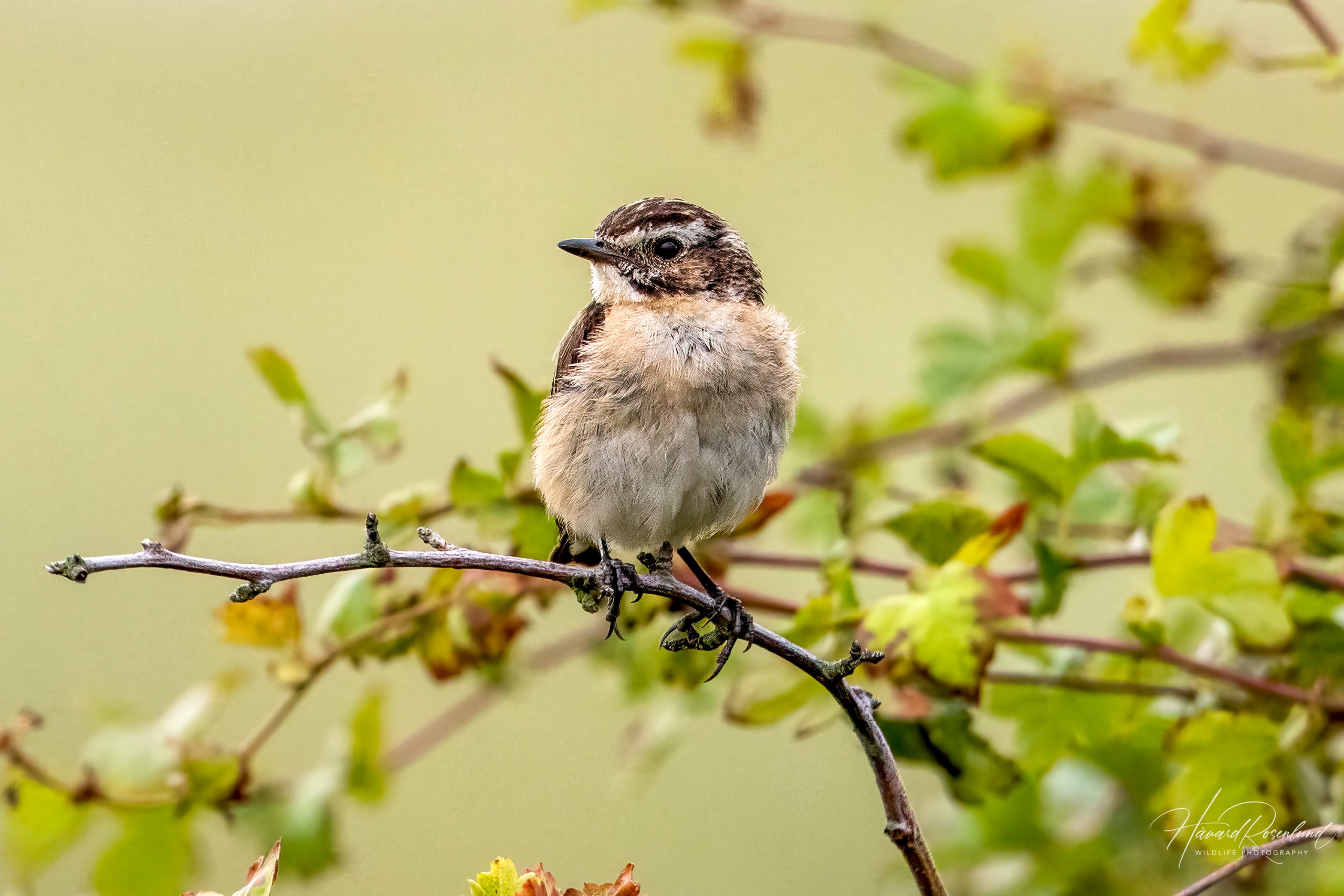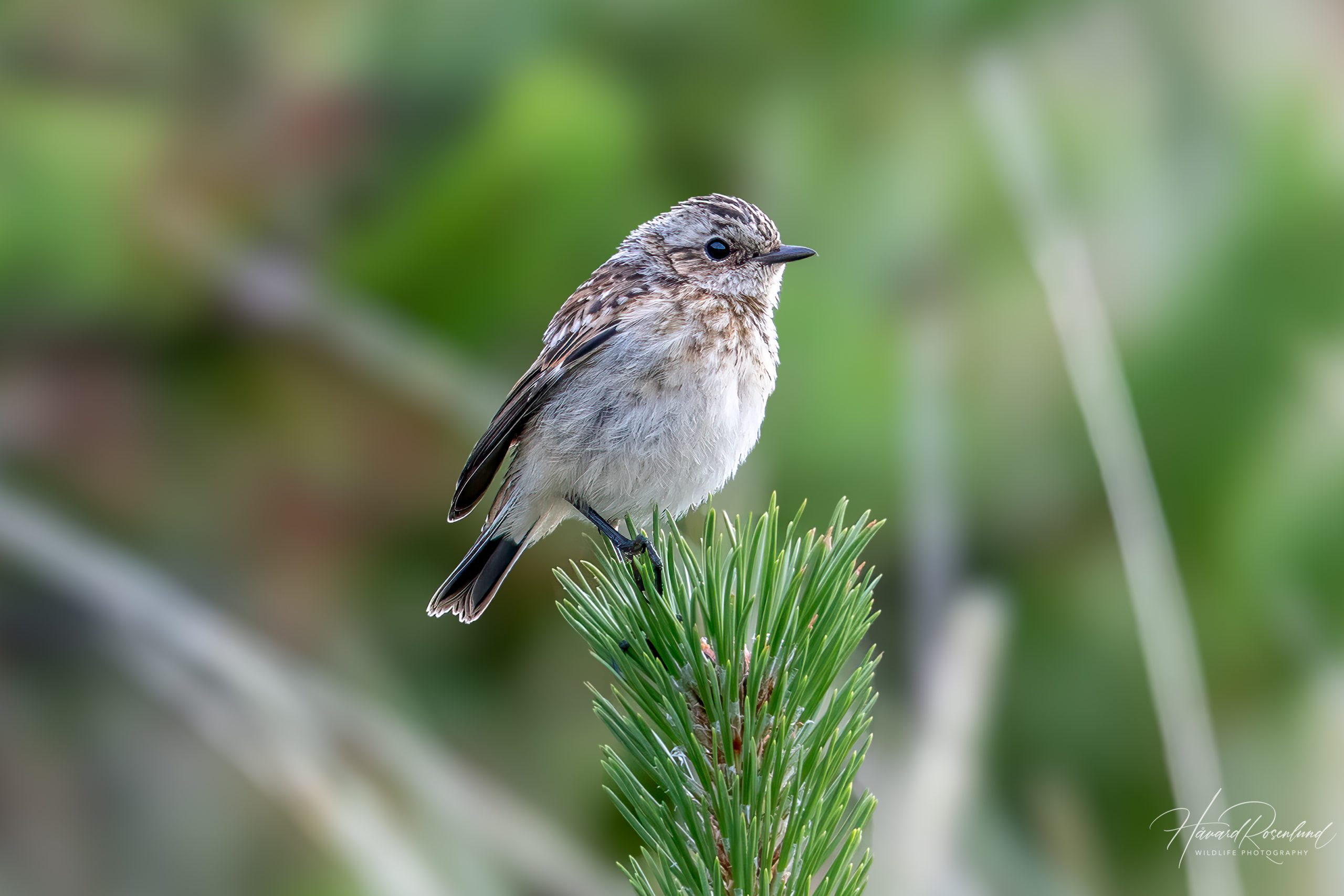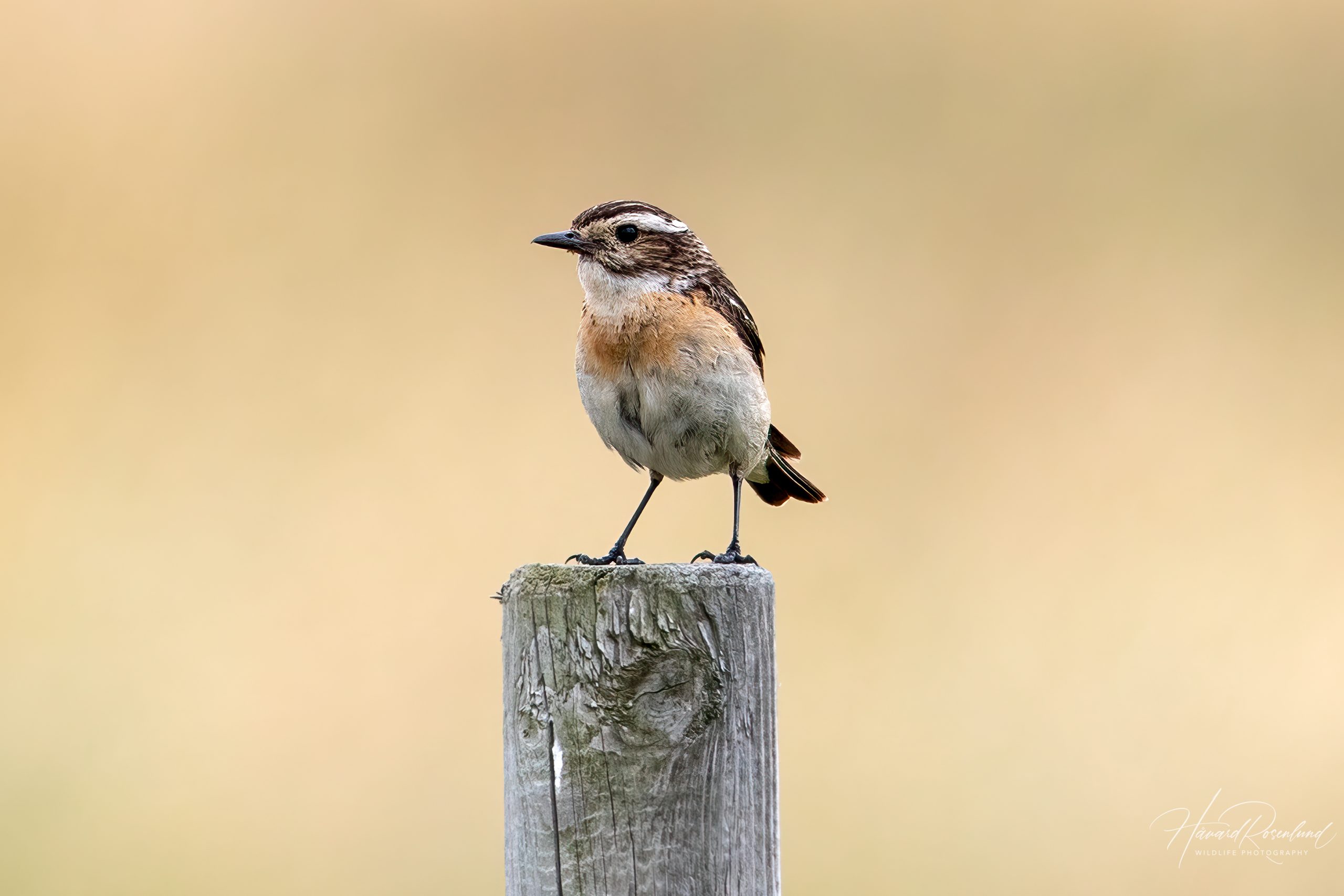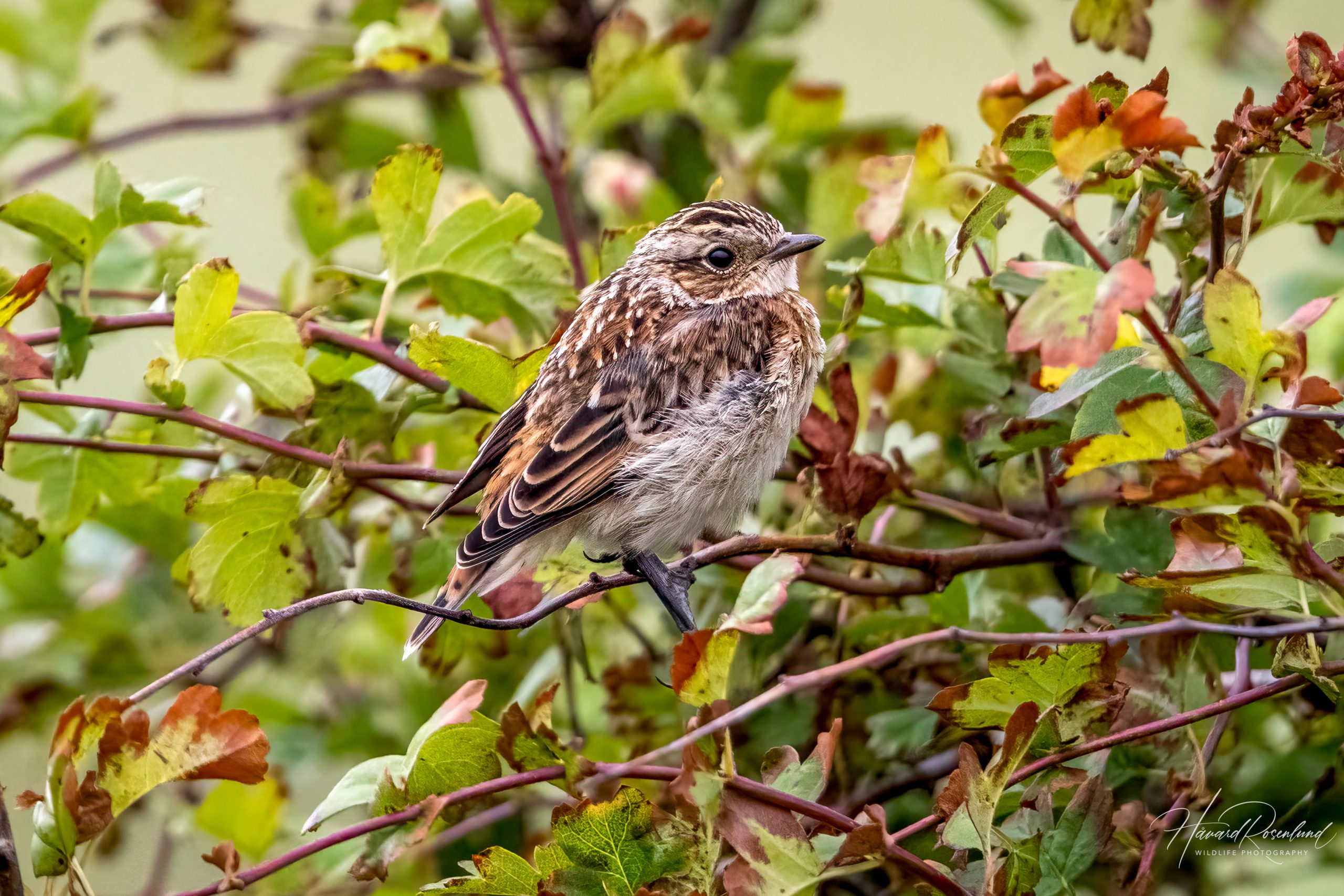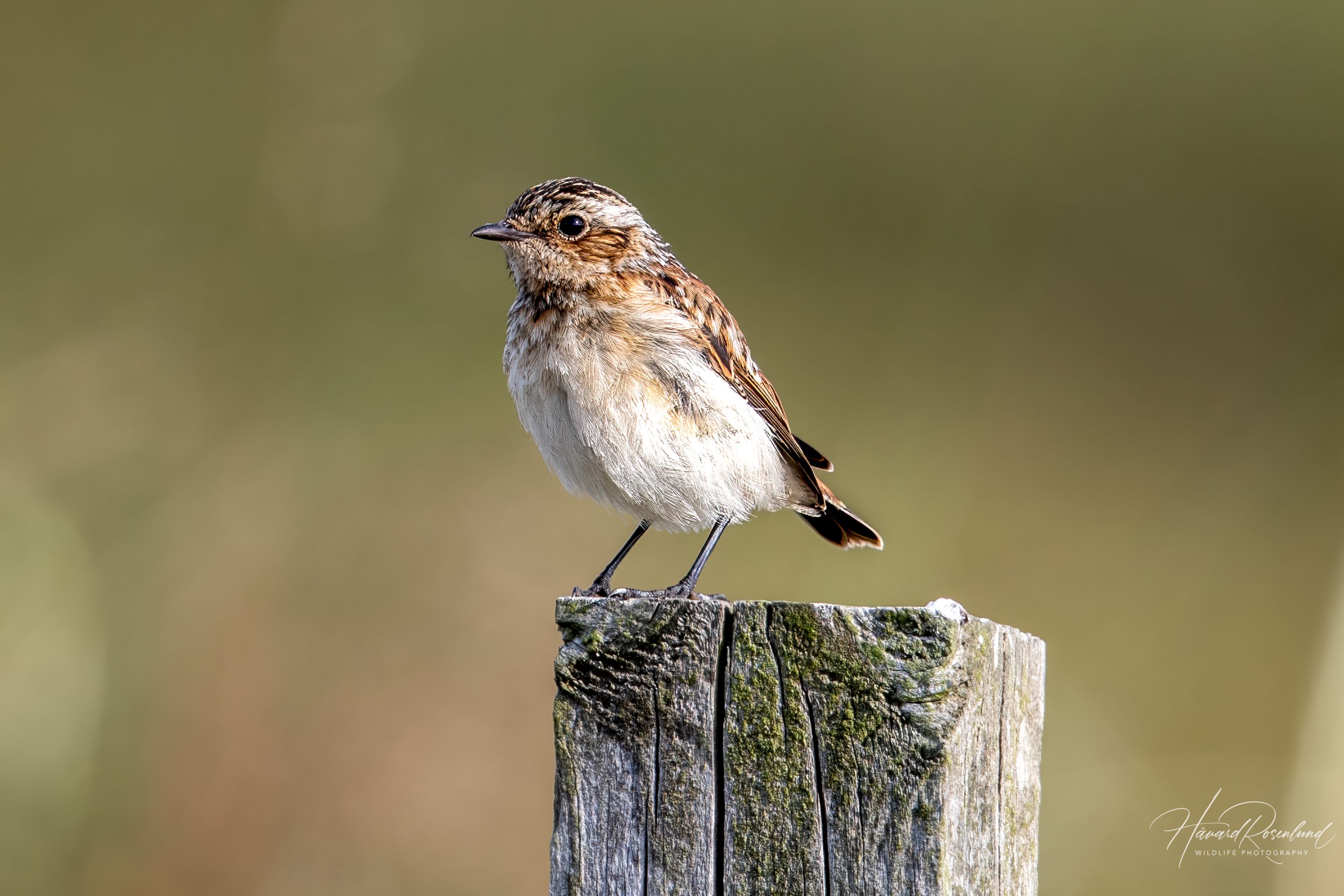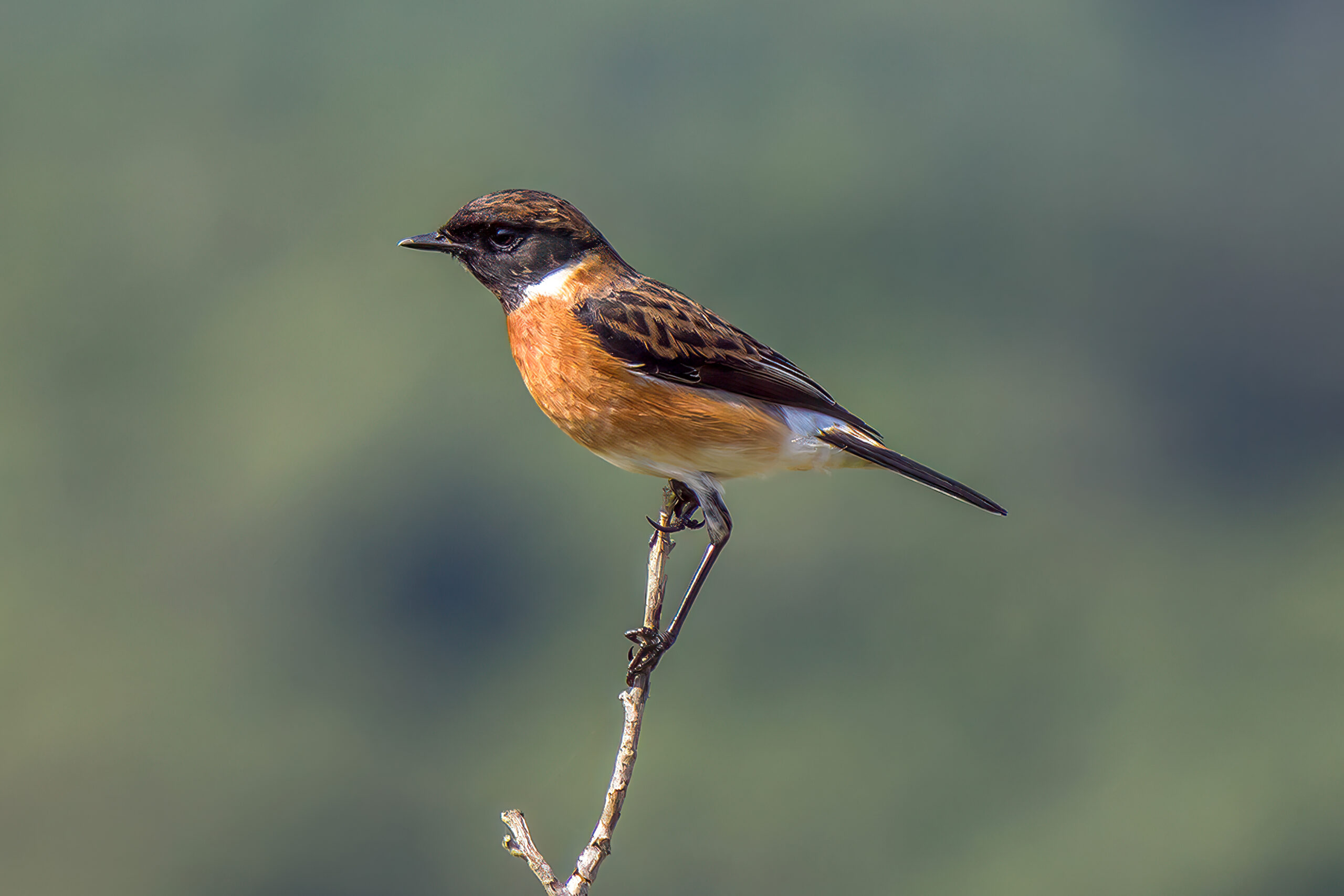Description
The whinchat (Saxicola rubetra) is a small passerine bird that breeds across Europe and western Asia, and winters in Africa. It measures approximately 12-14 cm (4.7-5.5 in) in length, with a wingspan of 21-24 cm (8.3-9.4 in), and weighs around 13-26 grams (0.46-0.92 oz). Males have a striking appearance with a prominent white eyebrow stripe, blackish face, and orange-buff breast. Females and juveniles are paler but still possess the characteristic eyebrow. The similar and closely related European stonechat (Saxicola rubicola) lacks this prominent eye stripe and has an all-black head and throat.
Diet & habitat
Whinchats inhabit open landscapes such as meadows, grasslands, and agricultural fields, often preferring areas with scattered shrubs or perches. They primarily feed on insects and other small invertebrates, which they catch by sallying from a perch to seize their prey. They also consume some berries and seeds, particularly in the autumn and winter months.
Migration
The whinchat is a long-distance migrant, breeding in Europe and western Asia and wintering in sub-Saharan Africa. They typically begin their southward migration in late August to September, returning to their breeding grounds around April to May. Some populations travel over 5,000 kilometers between their breeding and wintering areas.
Nesting
Whinchats breed from May to July. They build their nests on the ground, often concealed in dense vegetation. The nest is a cup-shaped structure made from grass and lined with finer materials. The female typically lays 4-7 eggs, which she incubates for about 11-14 days. Both parents participate in feeding the chicks, which fledge approximately 14-15 days after hatching.
Status
The whinchat is currently classified as least concern on the IUCN Red List. However, their populations are declining in some areas due to habitat loss and changes in agricultural practices. Conservation efforts focus on preserving suitable breeding and foraging habitats to support their populations.




